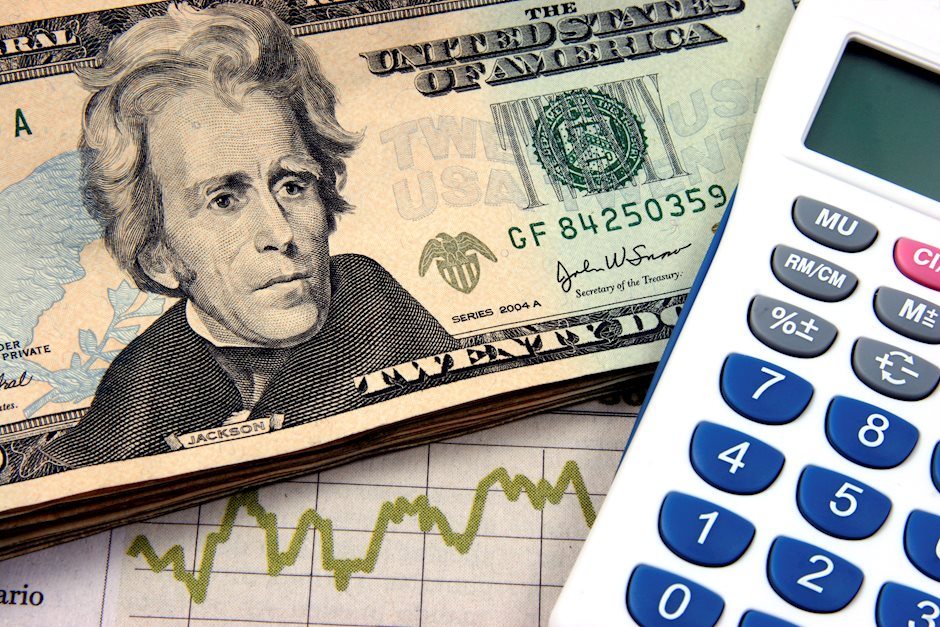US Dollar steady with markets looking for direction after upbeat Durable Goods
- The US Dollar retreats mildly on Tuesday for a second day in a row.
- Traders see Durable Goods coming in as a strong beat on estimates.
- The US Dollar Index steadies above 104.00 and sees the selling pressure halt for now.

The US Dollar (USD) weakens for a second consecutive day on Tuesday, though intraday losses are being pared back by stronger Durable Goods. Markets will welcome clear data after US Federal Reserve members have contradicted each other, with calls for three and only one interest-rate cut. This dispersion could make the Fed less credible at a moment when markets seem to be challenging the broader stance of the US central bank, a scenario that could lead to erratic moves for the USD.
Durable Goods orders are triggering a bit of a turnaround in sentiment for this Tuesday. Still, Consumer Confidence and the Richmond Fed Manufacturing Survey were a bit less supportive and gave some counterweight against the upbeat Durable Goods reaction. Traders will want to see confirmation if the Fed is right or wrong about interest-rate cuts and the health of the US economy and trade that adjustment.
Daily digest market movers: Richmond Index sinks
- Russia has accused the US, UK and Ukraine of being behind the Moscow concert hall attacks.
- The People’s Bank of China (PBoC) fixed the Chinese Renminbi substantially stronger for a second day in a row against the US Dollar, triggering a lower USD/CNH.
- Durable Goods orders data for February were released:
- The headline Durable Goods Orders went from -6.9%£ to 1.4%, beating the 1.3% forecast.
- Durable Goods orders without Transportation jumped from -0.3% to 0.5%.
- The US Redbook went from 3.4% to 3.9% for last week's print.
- The Housing Price Index for January retreated by 0.1% against a positive 0.1% last month.
- US Consumer Confidence for March retreated below expectations from 106.7 to 104.7, where 107.0 was expected.
- Together with the US Consumer Confidence, the Richmond Fed Manufacturing Index for March sank lower from -5 to -11, while a steady -5 was expected.
- Equities are in the green in Europe and the US are holding up in the green, near or just below 0.50% for the most part.
- According to the CME Group’s FedWatch Tool, expectations for the Fed’s May 1 meeting are at 92% for keeping the fed funds rate unchanged, while chances of a rate cut are at 8%.
- The benchmark 10-year US Treasury Note trades around 4.26%, around the high for this week.
US Dollar Index Technical Analysis: Holding ground above 104.00
The US Dollar Index (DXY), which gauges the value of the Greenback against a basket of foreign currencies, trades a touch softer nearing 104.00. The projected easing in the Greenback is taking place as investors look for an equilibrium between the dovish Fed and the rather challenging markets on that possible outcome. The truth will probably be somewhere in the middle, which means the DXY could retreat a few points to challenge 104.00 and snap below this barrier by the end of the week.
The DXY is still eyeballing a pivotal level near 104.60, where last week’s rally peaked. Further up, 104.96 remains the first level in sight. Once above there, the peak at 104.97 from February comes into play ahead of the 105.00 region, with 105.12 as the first resistance.
Support from the 200-day Simple Moving Average (SMA) at 103.73, the 100-day SMA at 103.49, and the 55-day SMA at 103.64 are getting a fresh chance to show their importance. The 103.00 big figure looks to remain unchallenged for now after the decline after the Fed meeting last week got turned around way before reaching it.
Fed FAQs
Monetary policy in the US is shaped by the Federal Reserve (Fed). The Fed has two mandates: to achieve price stability and foster full employment. Its primary tool to achieve these goals is by adjusting interest rates. When prices are rising too quickly and inflation is above the Fed’s 2% target, it raises interest rates, increasing borrowing costs throughout the economy. This results in a stronger US Dollar (USD) as it makes the US a more attractive place for international investors to park their money. When inflation falls below 2% or the Unemployment Rate is too high, the Fed may lower interest rates to encourage borrowing, which weighs on the Greenback.
The Federal Reserve (Fed) holds eight policy meetings a year, where the Federal Open Market Committee (FOMC) assesses economic conditions and makes monetary policy decisions. The FOMC is attended by twelve Fed officials – the seven members of the Board of Governors, the president of the Federal Reserve Bank of New York, and four of the remaining eleven regional Reserve Bank presidents, who serve one-year terms on a rotating basis.
In extreme situations, the Federal Reserve may resort to a policy named Quantitative Easing (QE). QE is the process by which the Fed substantially increases the flow of credit in a stuck financial system. It is a non-standard policy measure used during crises or when inflation is extremely low. It was the Fed’s weapon of choice during the Great Financial Crisis in 2008. It involves the Fed printing more Dollars and using them to buy high grade bonds from financial institutions. QE usually weakens the US Dollar.
Quantitative tightening (QT) is the reverse process of QE, whereby the Federal Reserve stops buying bonds from financial institutions and does not reinvest the principal from the bonds it holds maturing, to purchase new bonds. It is usually positive for the value of the US Dollar.
Author

Filip Lagaart
FXStreet
Filip Lagaart is a former sales/trader with over 15 years of financial markets expertise under its belt.

















